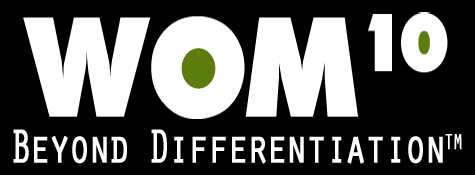When we say “NO” to a customer, there is rarely anything good that comes from it. We’ve all heard the famous phrase, “The customer is always right.” Whether you believe it or not, it’s true. From “the customers perspective,” they are always right. And they will dig their heels in to prove it to you. When we tell them “NO” they not only dig in deeper, but they try to find more (potentially irrational) weapons to use against us to prove they are right.
So, the battle ensues…we have the facts (or think we do) and they have the emotional response. Do we really think we can win this with the facts? Try doing this on a personal level. The next time you are in a heated argument that has high emotions, start throwing out the facts and see how that works for you. We all know it doesn’t…it might as well be gasoline on the fire at that point. And then backing up the facts with telling them “NO” takes the situation to the peak of pain.
You can still tell the customer “NO”…just not in those words and not at their peak of emotional anxiety.
Employees are often programmed to not give things away…for fear of retribution. They don’t want to face their management and explain why they gave something away that they were told not to give away. They won’t do it…it’s easier to say “no” to a customer and deal with a little grief on the phone than to say “yes” and deal with a lot of grief from their boss. If the organizational culture is set up where the employees feel more pain from their management than the customer, this won’t ever change.
But if the organization is Customer Obsessed, the exact opposite occurs…customers (and their solutions) come first, and employee retribution is gone.
To alleviate “customer anxiety” we need to ask questions, not give answers.
This might sound like on oxymoron because the reason the customer called up or stopped in was to get answers to their issue. But what is generally the case is confusion, misunderstanding, lack of information, or even lack of what was expected. To get all of these resolved in a manner the customer will find positive and helpful, we must train our employees to be great at asking questions, not giving answers. We need to have a different culture…one of inquiry rather than answering.
You are probably saying to yourself, “This sounds like a lit of twisting and turning and avoidance rather than confronting the issue and getting it resolved.” You would be correct, if it wasn’t for one simple component…we generally don’t know enough to get it resolved in the best way possible for both of us. This should be the goal of all our employees…learn enough so we can make the right decision that will benefit the customer and our company.
Think about some of the most recent interactions your employees (or even you) had with an angry or upset customer. They most likely called, stated that they were unhappy with something, and told you what the solution needed (or should) be. And then they wanted to know what you were going to do about it, the final resolution. Sound familiar? This model fits most issues that arise when a customer is unhappy about something.
The solution that they will be most happy with is the one that gets them the “right” resolution in the “shortest” amount of time. Solutions only come about when anxiety is low or gone.
First - Employee Empathy
The first component every employee should be armed with is “empathy.” This isn’t “sympathy,” it is “empathy,” where the customer can quickly understand you are there to listen, understand, and help…not do battle. So the first way to disarm the customer so you can get to the best solution is to start by letting them know you “understand how they feel.” This isn’t agreeing with them or admitting any fault, just letting them know you understand how they feel being upset. This usually starts to dial down the emotions significantly and sets the stage for the next step.
Second - Understanding
The second component is “understanding.” Trying to understand what exactly is going on gives the customer a chance to explain further the situation that is causing their meltdown. This should be done in a very positive, fact finding approach rather than being condescending or like we are annoyed. The attitude here is as important as the questions asked. Identifying the course of events or situation usually surfaces issues and possibilities for resolution. The best answers always star with the best questions.
Third - Seek Possible Solutions
The third component is to “seek possible solutions” from the customer, based on they just told us. In most situations, as we are asking great questions, they start to see some things they probably hadn’t thought about along the way as well. With some great questions behind you and showing empathy, they have probably calmed down significantly. This helps to lower their anxiety significantly. When their anxiety is lowered, they are more open to discussing possible solutions.
This is a great time to brainstorm some ideas, not final resolutions. This is just throwing out some ideas to discuss and see what they think or how they react. It’s an opportunity for “exploration” to see what seems to be something that would work for both the customer and the company. As you discuss various solutions, one or two will inevitably surface to the top of the heap. Take these two and discuss them further to see how the customer feels about them. Often, they will be agreeable to more than one solution.
Fourth - Suggest a Resolution
The final component is to “suggest a resolution” based on the various options. This is a starting point for designing the final solution. The customer might like the idea but wants some tweaks to it…they will want to negotiate the final resolution. This is great because they are demonstrating how they are buying into the answer with you…taking a personal stake in the outcome. This will work you closer to the ideal solution until you come up with one that works for both of you. You now have a resolution.
The process is often more important to the customer than the outcome.
When you think about the process I described above, there was never a statement of “no.” We never entered into a debate or “he said,” “she said.” We were simply focusing on working towards a solution that everyone will be happy with. Does it mean we might have to give some concessions to get there? Absolutely…this is a real possibility. And that should be OK with leadership. The goal is to get the best resolution we can for the customer first, and our company second. When this is the focus, we are Customer Obsessed.
And we have to always remember the end goal of these situations…we want the customer to think of us as “REMARK”able…someone who will go out of their way to tell others how awesome we are and how well we resolved their issue. This is the word we want spread to the few or many people they might encounter about this issue. We want them to rave about how well we worked with them to get a resolution and how easy it was to talk to us. Why? Because our competition isn’t doing this, and we want to stand out from the competition and get talked about.
Being Customer Obsessed changes your mindset, your culture, your DNA for how to never say “no” and resolve issues so your customers become even bigger raving fans of your business.
This is a process that doesn’t just happen in an organization…it takes a very concentrated and focused effort to make it happen. It takes changes in operational processes and redesigning your customer experience to deliver this to your customers every time, not randomly. Organizations who focus on this as a core strength are ones that truly care about their customer and how they feel working with them. These are Customer Obsessed organizations who want to become “REMARK”able in the eyes of their customers from initial sale through support, and yes, even issues.
What To Do Next...
Everything starts with leadership. Does leadership want to up their game with regard to their customers and create an environment that is “all in” and completely focused on the customer? If so, then there needs to be some education about what this looks like and decisions made. Caution: don’t start telling your employees to stop saying “no” or it will backfire. They aren’t armed with an appropriate “process” or “experience” to replace it with their customers…at least not yet.
Not sure you can do this as easily as I described? I’m happy to help you out with this if you need a boost to get started. Lots of ways to do this so that you can run with it going forward. Or if you just want to talk through it a bit more, let’s grab coffee (or lunch) sometime. The coffee (or lunch) is on you…the education and information is on me. My goal is to help save you TIME in the process if you are interested in being Customer Obsessed and becoming “REMARK”able in the process...which is my passion and goal for every company on the planet. Big goal…but it starts with one.
The only question that remains is, “Are you ready to be Customer Obsessed and become “REMARK”able?”

